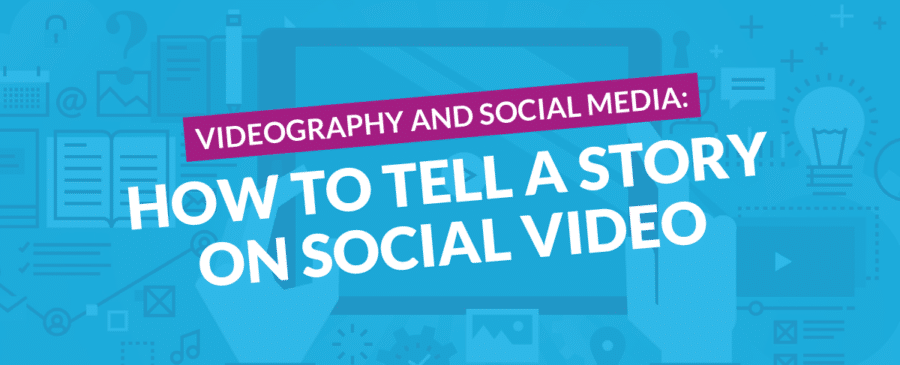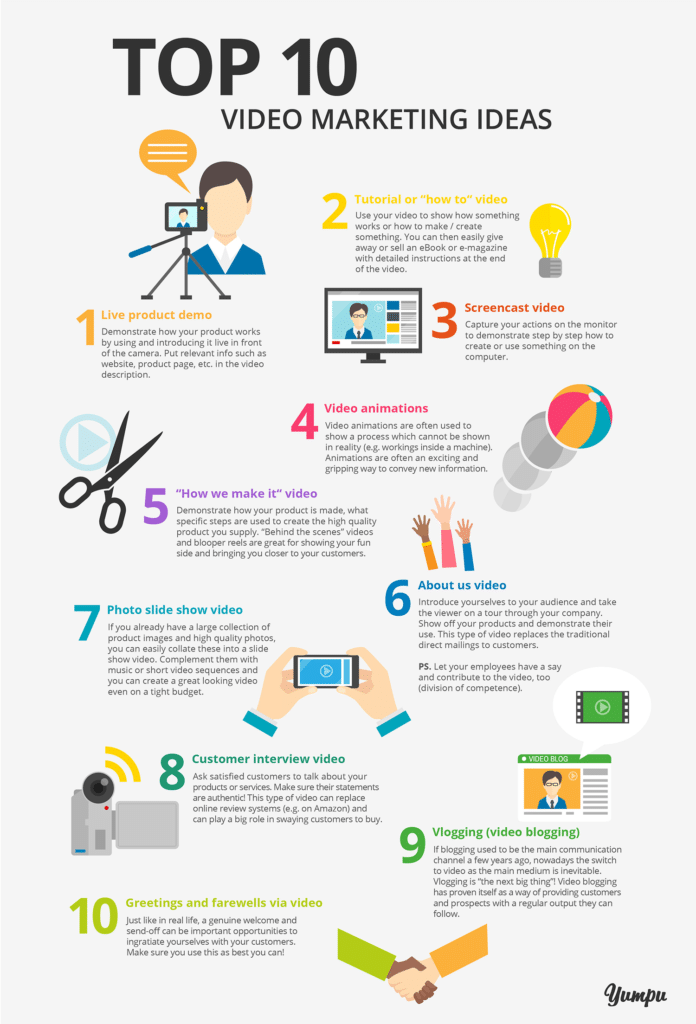Videography and Social Media: How to Tell a Story on Social Video

 Social video is an increasingly critical component of any digital marketing strategy. With 74% of online traffic projected to come from video this year, this content form has to become part of your marketing mix to really engage your consumers.
Social video is an increasingly critical component of any digital marketing strategy. With 74% of online traffic projected to come from video this year, this content form has to become part of your marketing mix to really engage your consumers.
“No matter what you’re selling, no matter what your company does, if you don’t have a video marketing strategy for the biggest video platforms, you are going to lose.” – Gary Vaynerchuk
So how do you create a video to share on social media, anyway?
Well, it starts with a story. Consumers are more engaged than ever with their favorite brands, but when they check out a video they want to know your story. Make sure your video incorporates these fundamentals to really engage your customers and tell your story well.
Discover Your Story
First, make sure you have a good story to tell. There are literally hundreds of ways you can weave your brand message into an interesting story — and it isn’t all about the plot line. Like all great marketing content, your story needs to be both informative and entertaining.
With video, you can show your customers something they’ve never seen before — even if it feels mundane to you. It provides a great place to present old ideas in new ways, or to take a fresh approach to everyday problems.
JSB Top Tip: It doesn't have to be product-based to bring value to your marketing campaign. Click To TweetYour story should reach viewers where they are, while showing them something new.
Story ideas could be things like:
- A fictional series that touches on subjects your viewers are familiar with. This is a great place to inject some humor into your marketing; even serious topics can use a little bit of humor every now and again.
- Expert interviews. If you can get in touch with leaders in your industry, great! If not, you can do interviews with less-than-expert people, from the employees who keep your company running on a daily basis to a non-competing CEO of another industry company.
- Behind-the-scenes stories. How are your best-selling shoes made? Where do the ingredients for your organic energy bars come from? Who actually puts your software systems together? People love to learn how things work, and giving them a behind-the-scenes glimpse of your company has the added benefit of showing your transparency as a company.
- Tutorials and how-tos. Take those how-to FAQs you’ve put together and turn them into a video. Some people would rather work from stagnant diagrams on a computer screen; but for most, seeing the information in action is by far the easiest way to figure out how to fix something that’s broken or put together a product that just came out of the box.
- Customer success stories. You don’t want to overdo it here, but it doesn’t hurt to take a few of your most satisfied clients and put together a couple of videos featuring their success with your product or service. Make sure that these videos focus on the clients — limit it to only two or three mentions of your company, because you’re not making a promotional video.
- Documentary-style stories. Simple narration, visually stunning video, and the raw reality of your subject matter make documentary-style shorts appealing in a number of industries.
- Industry news. Especially in the B2B niche, your viewers are going to stay up-to-date on industry news. Why not get it from you — and why not get it in a video? A weekly newscast encourages people to keep coming back to your social media platforms, and taking a tongue-in-cheek approach might really lighten the mood.
To get started, you can repurpose some of your most successful blog posts into videos with a different twist; but whatever you do, don’t make it all about your company.
Your customers want to know what’s in it for them.
Source: Yumpu.com
Have a Strong Starting Point
It’s not the story that matters; it’s how you tell it… so the saying goes.
Well, maybe the story does matter — but no matter how awesome your story is, if you don’t tell it well, nobody will listen.
In order to turn that wonderful idea into a video that people will actually care about and want to watch, you must have a strong starting point.
That means writing down what the content of your video should include. It means making a plan that you can follow, and sticking to that plan.
Some great starting points include:
- A good script.
- Several great interview questions, and an expert lined up to interview.
- Clearly outlined key points.
- A developed message.
Clarify what will be in your video and what you hope to accomplish with the video. Then, it’s time to fill in the details.
Build the Details into the Story
This is where the difference between an amateur videographer and a professional producer really comes in. You’re almost ready to start shooting, but first take a look at these details of your story:
- Characters. Relatable characters are key to gathering interest. If your viewers can’t relate with the characters, they won’t watch the video. Even the most bizarre personalities of YouTube (think Old Greg) were relatable to viewers, because they shared their sense of humor and spoke their generational language.
- Tone. A fully developed tone sets the mood of the video, and helps you connect with your viewers on an emotional level. Is the tone of your video consistent with your brand voice? Is it consistent with itself?
- Setting. Choose a setting that works with the tone of your video, looks professional, and resonates with your viewers.
- Lighting. Although it is easily overlooked if you’ve never done a video before, lighting is a critical element to the professionalism of your video. Use plenty of overhead lights if you’re shooting indoors, or wait until you have a clear, sunny day to film outside. A lot of your message gets lost if your viewers have trouble seeing your content.
- Clean Up. The finishing tasks of producing a video are often best left to people who know exactly what they’re doing. Hire a professional to clean it up, or look for volunteers who are still in school or trying to build their portfolio.
So, tell your own story and share it with your dedicated social followers, because if you don’t, you might start losing them.
Contact us at the Digital Training Institute to learn more about today’s digital marketing landscape.







